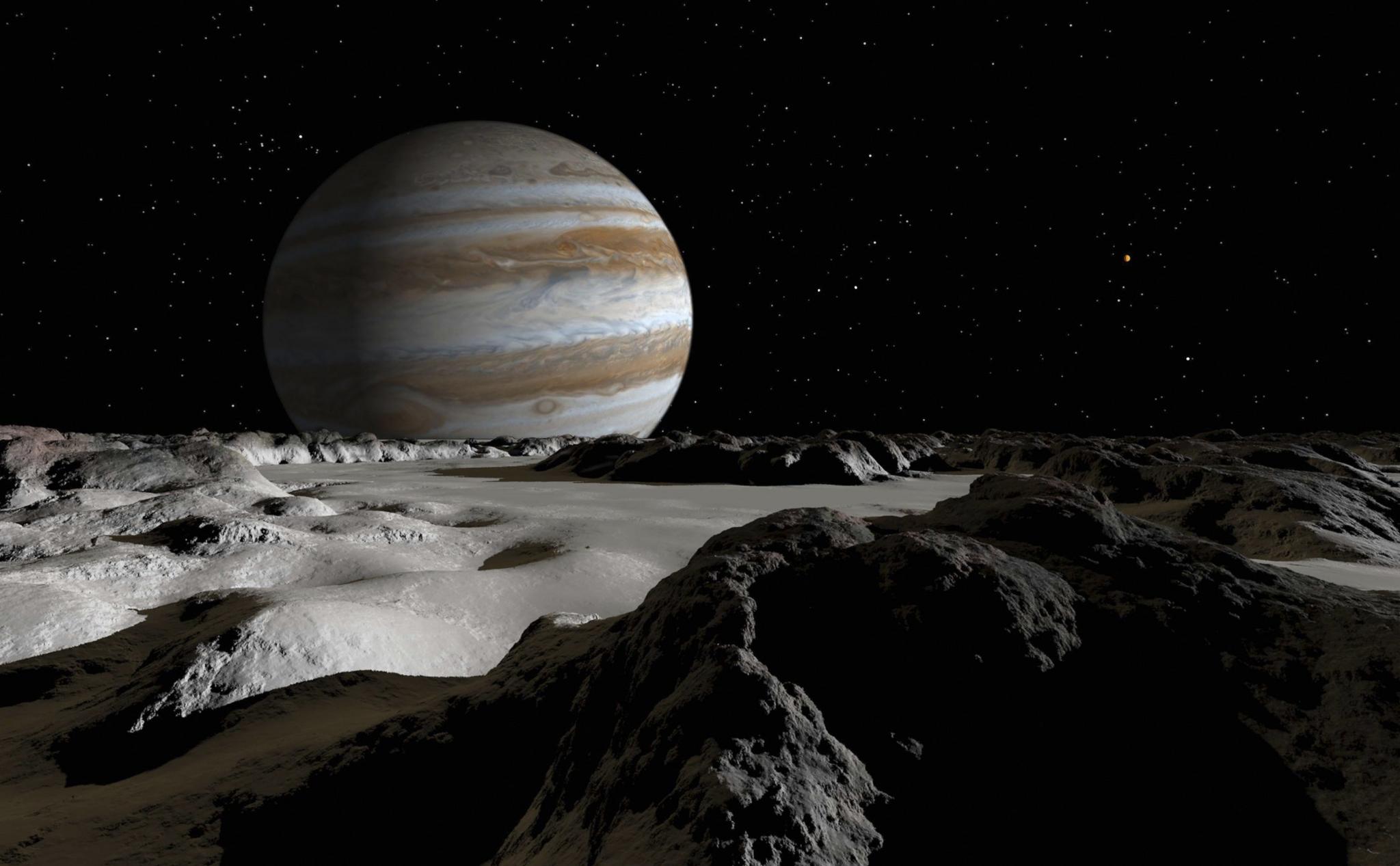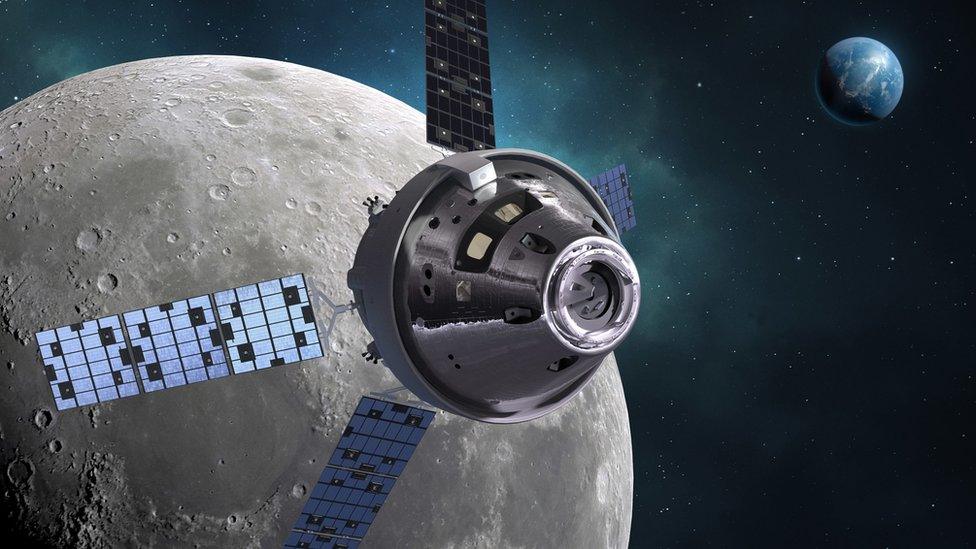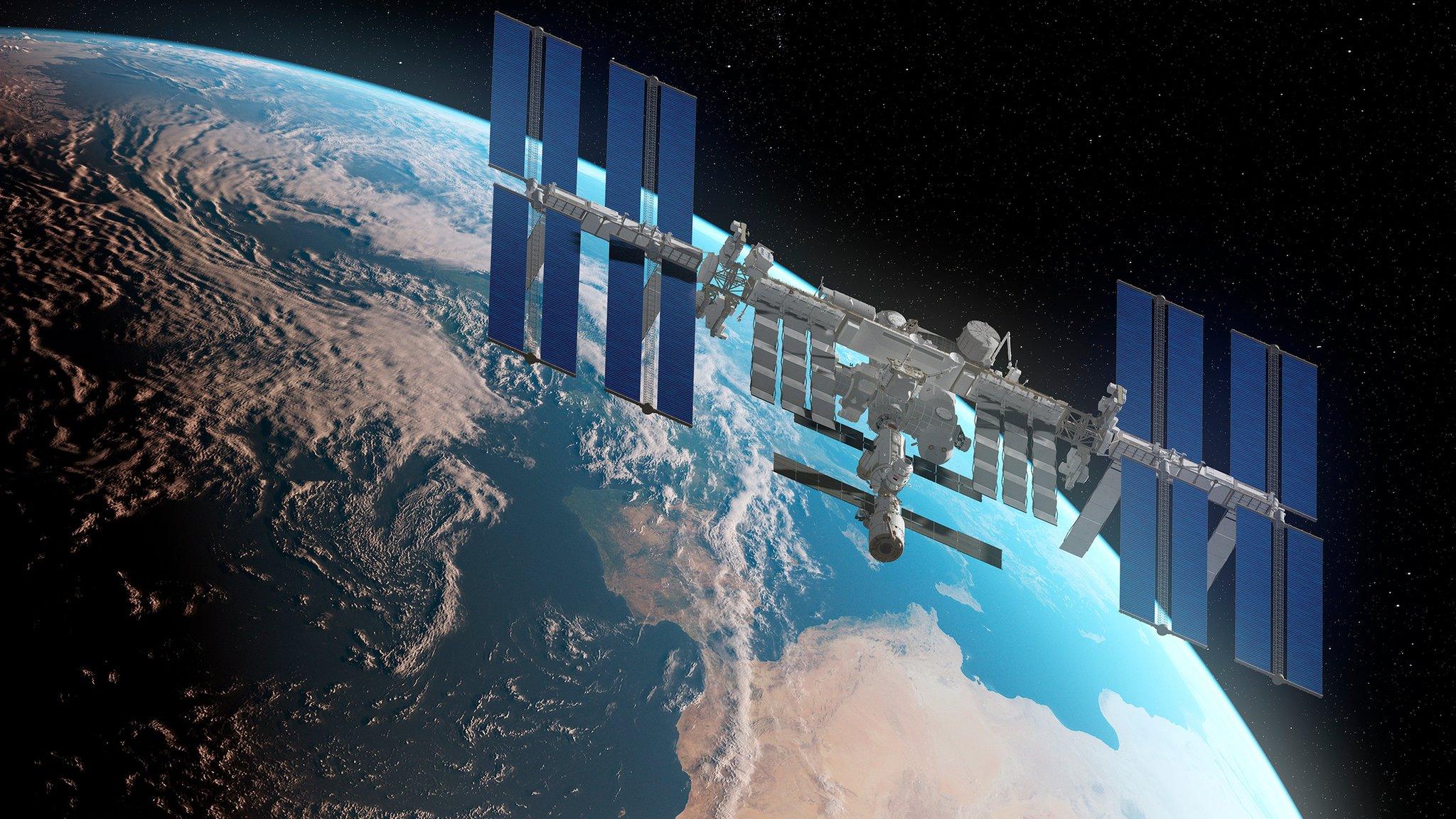Nasa aims for crewed mission to Jupiter or Saturn's moons within 80 years
- Published
- comments

The next giant leap for humankind? It could be the moons of Saturn and Jupiter
If all goes to plan, by the end of 2024 humans will have stepped foot on the Moon for the first time in more than 50 years.
The Nasa mission, known as the Artemis program, will be the first crewed mission to the Moon since Apollo 17, which landed on the lunar surface in 1972.
Artemis is seen as the first step in preparation for a future mission to the planet Mars, but a new report suggests humans should be aiming to go even further before the end of this century.
Produced by a team at Nasa's Jet Propulsion Laboratory, the research says that journeys to the moons of Jupiter and Saturn should be within reach before the start of the 22nd century.

A Nasa report recommends that humans should target Europa - one of Jupiter's moons - as a possible destination for a crewed mission, within the next 80 years
They say, the moons Titan and Enceladus - that orbit Saturn - and Europa and Callisto - that orbit Jupiter - should be the aim for space exploration within the next 80 years.
As for missions to Jupiter and Saturn; the two planets are known as gas giants and even with advancing technology, conditions there would make it very difficult for crewed missions even in the future.
Beyond that, the report says the 23rd century could see launches of human-crewed interstellar missions to exoplanets - which are planets that orbit around distant stars, similar to Earth and the other planets in our own Solar System.
Missions to other galaxies, several light-years away will probably have to wait almost 400 years, until the end of the 24th century, the report says.
Astronaut Tim Peake talks about aliens, missions to Mars, climate change and space tourism
The research, which has the catchy title of "Avoiding the Great Filter: A Projected Timeframe for Human Expansion Off-World" has looked at the last 60 years of human space travel, known as the 'space age'.
Examining how technology has advanced in the time since Russia first launched a probe called Sputnik-1 into orbit in 1957, researchers were able to make space travel predictions spanning hundreds of years into the future.
The Big Question: How big is space?
However, the report also comes with a warning and says journeys to distant worlds are only achievable if humans can avoid catastrophes here on Earth, such as those caused by climate change.
These potential events, called 'the great filter' by astronomers, also include things like wars or even pandemics - things that could significantly impact the progress made by humans in the future.
The report recommends that, over next several hundred years colonisation away from Earth is "critical to the long-term survival of the human race."
Outlining a future to-do list, the paper says humans will eventually need to develop travel that can go at (or close to) the speed of light to reach the furthest stars and planets in our galaxy.
But for now, or specifically during the remaining 80 years of this century, researchers say that our own Solar System should be the aim, with plenty of places, planets and moons "for astronauts to further explore and adventuring colonists to conquer starting here in the 21st century".
When can we travel to space?
(Late) 2020s: base camps on the Moon and robotic missions to the closest exoplanets.
(Late) 2030s: crewed mission to Mars.
2030s: robotic missions to Sun-like star Tau Ceti (11.9 light-years away) .
2040s: robotic missions to TRAPPIST-1 system 40 light-years away, sets off.
2050s: robotic mission to distant stars.
2060s: crewed mission to the Asteroid Belt between Mars and Jupiter.
2070s: crewed mission to Jupiter (likely the moon Callisto because it's sufficiently removed from the planet's intense radiation fields).
2080s: crewed mission to Saturn's moons (likely Titan and/or Enceladus).
2250: crewed mission to close exoplanets like Proxima Centauri (4.2 light-years away).
2300: robotic mission to the TRAPPIST-1 system, 40 light-years away, finally arrives.
(Late) 2400s: crewed mission to distant stars halfway to the centre of the Milky Way.
- Published23 September 2020

- Published4 October 2021

- Published3 November 2020

